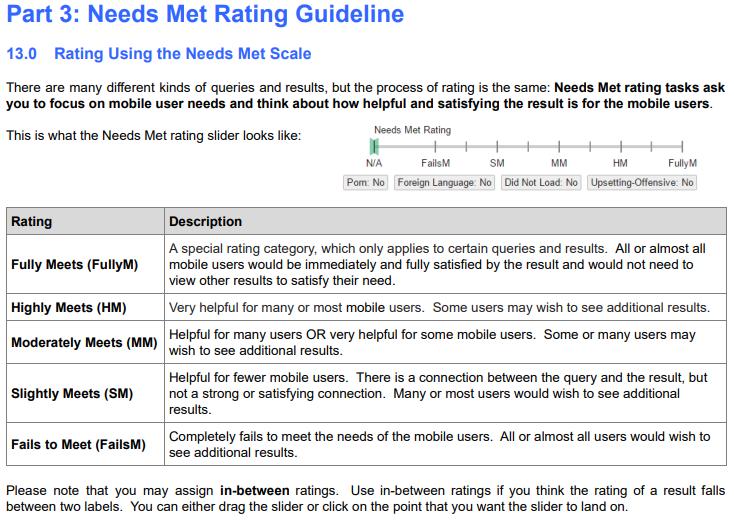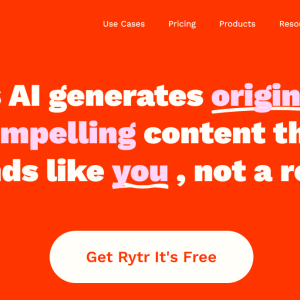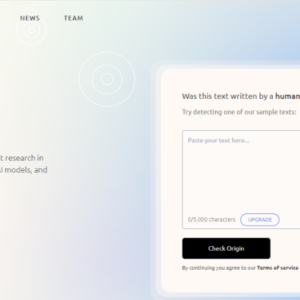Artificial Intelligence (AI) has undoubtedly revolutionized the field of marketing, enabling businesses to reach and engage with their target audience more effectively. Through AI-powered tools and algorithms, marketers can analyze vast amounts of data, predict consumer behavior, and personalize marketing campaigns. However, as with any technological advancement, there are drawbacks to relying too heavily on AI in marketing. This essay explores the potential drawbacks of using too much AI in marketing, including the risk of dehumanizing the customer experience, the limitations of AI in understanding complex emotions, and the potential for data breaches and privacy concerns. While AI undoubtedly offers great benefits in marketing, it is crucial to strike a balance between the use of AI and maintaining a human touch to ensure a positive and ethical marketing approach.
- Which Is The Best Next-Gen AI Website Builder?
- Tidio Review: Can This AI Customer Service Tool Help Your Business?
- Descript Review: The Best AI Transcription & Editing Tool for Creators?
- 20 AI Tools to Scale Your Marketing and Improve Productivity
- AI in Business: How We Use Artificial Intelligence at Our Agencies
Artificial intelligence has been heralded as the next frontier in business innovation, likened to the discovery of electricity or the invention of the wheel. The hype is real. From automating customer service to predictive analytics, AI promises unprecedented efficiencies. But are there drawbacks of AI?
You are viewing: The Drawbacks of Using Too Much AI in Marketing
As the saying goes, too much of a good thing can be a bad thing. As businesses scramble to embed AI in every facet of their operations, the question arises: Are they compromising user experience and efficacy in the process?
In this post, we’ll take a look at all the ways AI has been useful for marketers but, more importantly, the ways it can actually stymie authentic creativity.
The Double-Edged Sword in User Experience
Imagine the excitement of a parent prepping their toddler for a critical IQ test required for school admission. They’re seeking simple, straightforward answers on Quora about scoring ratios. Instead of receiving a quick and direct response, they’re inundated with verbose, AI-generated responses that dance around the subject without providing a clear answer.
This exact scenario reflects a growing issue in AI implementation.
While AI can sift through a mountain of data and generate a response, it often fails to consider the context and the user’s need for straightforward information:

This mishap not only frustrates the user, but may also deter future interactions with the platform.
The takeaway? Implementing AI should be about enhancing user experience, not complicating it. It needs to be mindful of the user’s context, providing information that is direct and useful.
Overcomplicating Simple Things
In a world obsessed with the next big thing, there’s a tendency to over-complicate even the simplest tasks. It’s as if simplicity is considered too mundane for a technology as cutting-edge as AI.
See more : How to Go About Scaling AI in Your Organization
But sometimes, simpler is better.
This drive to infuse AI into every conceivable scenario creates a dissonance between what the user is looking for and what the AI offers. When a straightforward answer turns into a convoluted maze of information, the user experience doesn’t just suffer, it drives users away.
This disconnection is more than just an inconvenience. It can translate into real costs for businesses. If people find that their experience is hampered by needless complexity, it erodes trust and confidence in the brand. In the long run, this might mean lost revenue and opportunities.
It’s essential for businesses to remember that AI should enhance and simplify user interactions, not show off technical capabilities that, while impressive, are out of sync with what consumers actually want or need.
Practical Applications vs. Information Overload
In advertising, where the devil is in the details, the capacity for AI to rapidly assess and summarize complex information can be a game-changer. However, the line between utility and overwhelm is thin.
The key is to offer just enough insight to inform decisions without drowning the user in details. It’s like the Goldilocks Principle for information — what’s offered should be “just right” for the task at hand, allowing for quick, effective actions without bogging down the process.

There’s a delicate balance to maintain between being informative and overwhelming, a fulcrum that decides whether AI becomes a trusted assistant or an annoying hindrance. This balance hinges on an AI’s ability to provide quality over quantity.
The objective shouldn’t be to spit out as much data as possible but to deliver finely tuned, actionable recommendations that can directly contribute to a business goal. In this way, AI becomes not just a tool for automation, but a catalyst for strategic thinking and nuanced decision-making. This is AI at its best: adding layers of functionality while preserving its simplicity.
Building Confidence with AI in Your Sales Process, Not Confusion
In the business of sales, building confidence is everything. The challenge here is integrating AI in a way that bolsters, rather than undermines, consumer confidence. Sales, at its core, is about solving problems for clients.
If AI can make this process smoother and more efficient, fantastic. But it’s critical to avoid implementing AI as a patchwork add-on.
See more : 13 Jasper.ai Alternatives: Which One is Best for You?
Let’s take the example of a SaaS (Software as a Service) company that offers customer relationship management (CRM) tools. Now, CRMs are invaluable in sales for tracking interactions, managing leads and automating various tasks. Here’s where AI comes into play to enhance customer confidence rather than breed confusion.
Imagine a feature within the CRM that uses AI to predict the likelihood of a lead converting into a customer based on historical data and current interactions. Instead of presenting these predictions in a convoluted graph or a series of confusing numbers, the system distills the information into a straightforward “Confidence Score” visible right next to the lead’s name.
This simple metric can guide sales reps in prioritizing high-value leads and makes it easier for the sales team to understand their pipeline at a glance.
In this scenario, the use of AI is purposeful and serves to reinforce confidence by simplifying complex predictive models into actionable insights. It is not a feature just tacked onto the existing system but one that is integrated thoughtfully, improving both efficiency and understanding for the sales team.
This is a prime example of how when executed correctly in the sales domain, AI builds confidence rather than creating confusion or redundancy.
Last Words on the Drawbacks of AI: Think Before You Leap
So, what’s the bottom line? Before jumping on the AI bandwagon, it’s imperative to consider the real-world impact on users. If it enhances their experience by providing value, then it’s a good fit. If it’s there just for the sake of having AI, then perhaps it’s time to go back to the drawing board. Because, as experience shows, poorly implemented AI can do more harm than good.
In many cases, the misuse of AI may lead to a decline in user engagement and trust. For example, people are less likely to interact with platforms like Quora if they’ve had a bad experience with their AI algorithms. Businesses should bear in mind that the technology is only as effective as its implementation.
Let’s recap on a few things:
- Context Matters: AI must be sensitive to the context in which it is used. A wrong application can lead to user frustration and decreased engagement.
- Quality Over Quantity: It’s not about having the most AI, but about having the most effective AI. Opt for smart, targeted applications over blanket implementations.
- Enhance, Don’t Complicate: The end goal should be to make processes simpler and more efficient, not the other way around.
- Iterative Process: Like any other aspect of business, AI will require adjustments and refinements. Don’t be afraid to adapt.
So next time you think about integrating AI into your business processes, pause and consider: Will this create a smoother experience for the user, or will it only serve to complicate matters unnecessarily?
A strategic, thoughtful approach to AI can make all the difference between becoming an industry leader and losing consumer trust.
For more insights and lessons about marketing, check out our Marketing School podcast on YouTube.
That’s a wrap on “The Drawbacks of Using Too Much AI in Marketing” We hope you’ve found a trove of useful insights and fresh perspectives. Your opinions and ideas matter to us—join the conversation below and share your take! Hungry for more tech insights? Dive into our diverse collection of articles where innovation meets practicality. Discover More AI Softwares.
Stay in the loop with the latest in AI and tech – your journey into the digital future continues at wubeedu.com.
#Drawbacks #Marketing
Source: https://wubeedu.com
Category: AI





